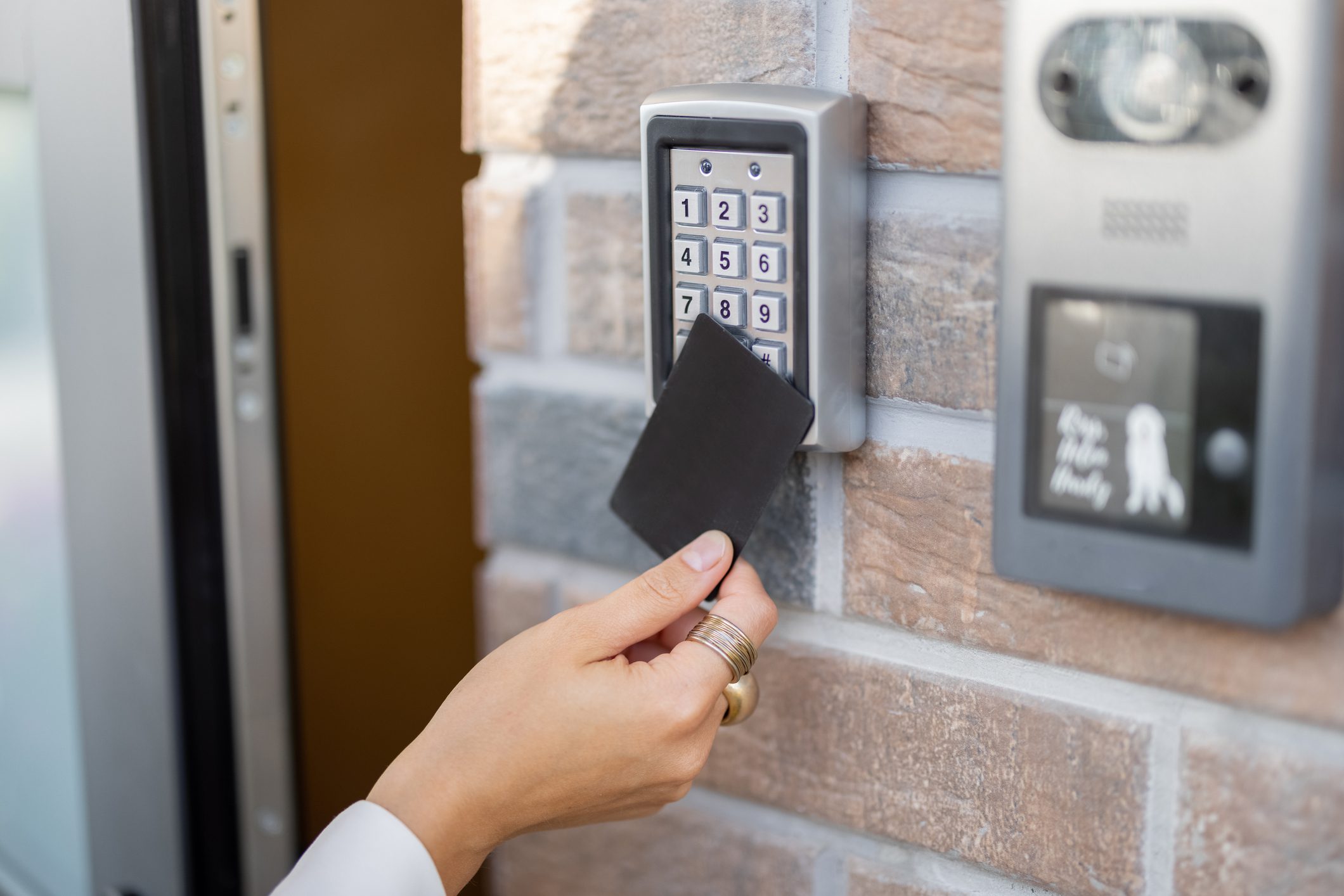Business Communication Solutions provides cabling installation, equipment replacement, and troubleshooting services for access control systems in Austin and the surrounding areas. If you’re experiencing issues with your current access control due to cabling problems or need equipment replacement, contact us at 512-257-1433 for assistance. There are several reasons why access control systems may fail, and wiring issues are a common cause. Over time, wear and tear, incorrect wiring, or the use of improper materials can impact performance. As a business owner, it’s crucial to protect your building, occupants, data, and assets by minimizing the risk of unauthorized entry. Efficient access control systems facilitate convenient entry for authorized individuals and visitors, enhancing security. If you’re considering adding an access control system for added security or require help with an existing system, please call us at 512-257-1433.

Access Control Cabling Installation Services in Austin
If you require only the installation of access control cabling because your infrastructure is being set up by another company, we’ve got you covered. We specialize in providing only the cabling installation for access control, ensuring a smooth and efficient setup process. Our team will coordinate with your access control provider to determine the necessary number of cables and the specific equipment required, guaranteeing the use of suitable cabling for your needs.
Access Control Cabling Troubleshooting Services in Austin
Business Communication Solutions provides troubleshooting services for access control cabling. If you’re facing problems with your access control system and are uncertain whether it’s a hardware, software, or cabling issue, contact us for assistance. There’s no need to presume that your entire access control system requires replacement when it malfunctions; sometimes, it may be as simple as replacing a faulty cable.
Access Control Hardware Replacement
Should you require replacement of your access control hardware due to malfunctions or the need for an upgrade, please contact us at 512.257.1433. Over time, access control hardware may suffer significant wear and tear from heavy usage, extreme temperatures, and misuse. Additionally, if your current access control system has become outdated, we can help you with the necessary hardware upgrades. Rest assured; our assistance is readily available.
Access Control Installation for Small Businesses
We provide access control installation services for small businesses in Austin and surrounding areas. Contact us today for a consultation to tailor your access control infrastructure at a competitive price. We’ll discuss various options to find the perfect fit for your business’s needs without exceeding your budget.
Common Issues with Access Control Systems:
Wiring Failure:
The wiring process is the most time-intensive aspect of installing an access control system. Each electric strike, maglock, and credential reader must be hardwired to an Access Control Unit (ACU), usually located in the IT room. Utilizing incorrect wiring types can lead to numerous problems within your access control infrastructure. Substituting one type of cable for another is not advisable as it may result in either excessive power that can cause equipment to burn out, or insufficient power leading to intermittent connections. Employing cables with improper ratings can also escalate repair costs.
Hardware Malfunction:
Access control systems are composed of multiple hardware components, including access card readers, smart cards, facial recognition systems, and smart locks. These elements collaborate to maintain the system’s operation. Identifying the causes of malfunctions is crucial in preventing physical equipment failures that lead to operational issues. Hardware malfunctions can be divided into two categories: natural and non-natural damage. Natural damage arises from long-term use, aging of hardware, and exposure to severe environmental conditions, all of which affect the system’s efficiency and durability. Non-natural damage includes deliberate sabotage or misuse. At BCS we assist in identifying and troubleshoot the issues you are experiencing to get your business and assets protected.
Network Security Issues:
In the realm of electronic access control systems, network security is crucial. An unprotected system may be susceptible to hacking, resulting in problems like key card cloning and data breaches. Hackers might exploit systems due to vulnerable networks, weak passwords, obsolete firmware/software, or insufficient security measures. To enhance security, it’s essential to consistently update and patch network devices and software to fix vulnerabilities and to replace weak passwords with strong ones.
Types of cables used for a basic access control installation
18/2 Twisted Pair Relay Cables – Door Strike
Door strikes typically require low-voltage wiring. The most common wire types used for door strikes are two-conductor cables. Door strikes come in different voltage specifications, usually 12V or 24V. An 18/2-gauge wire is often used to power electronic door strike.

18/6 Twisted Pair – Card Reader
Reader cables vary from 6 to 15 conductors. The majority of systems, such as Weigand or proximity readers, use 6 conductors. Devices like keypads may need more conductors. Typically, the AWG size ranges from 22 to 18 for stranded conductors. Standard reader cables typically use PVC (flame retardant) or PP for insulation. These cables are designed for low data signal transmission and do not necessitate extremely low capacitance. However, reader cable signals are prone to interference from low frequency noise, which is why a foil shield is usually essential in the overall design of the cable.

18/4 Twisted Pair – Request-to-Exit (REX)
The REX cable is utilized in Access Control Systems where a REX (Request-to-Exit) feature is necessary. REX can take the form of either a push-button or a motion detector. Typically, the cable conductor and AWG range from 22-18 AWG with 2 to 4 conductors.

Cat5e or Cat6 Ethernet Cable – ACU
A Cat5e or Cat6 patch cable, often referred to as a Cat5e/Cat6 Ethernet cable, is a variety of network cable that connects devices within a local area network (LAN). It’s widely utilized in residential, office, and various building settings to link computers, routers, switches, and additional network devices.


